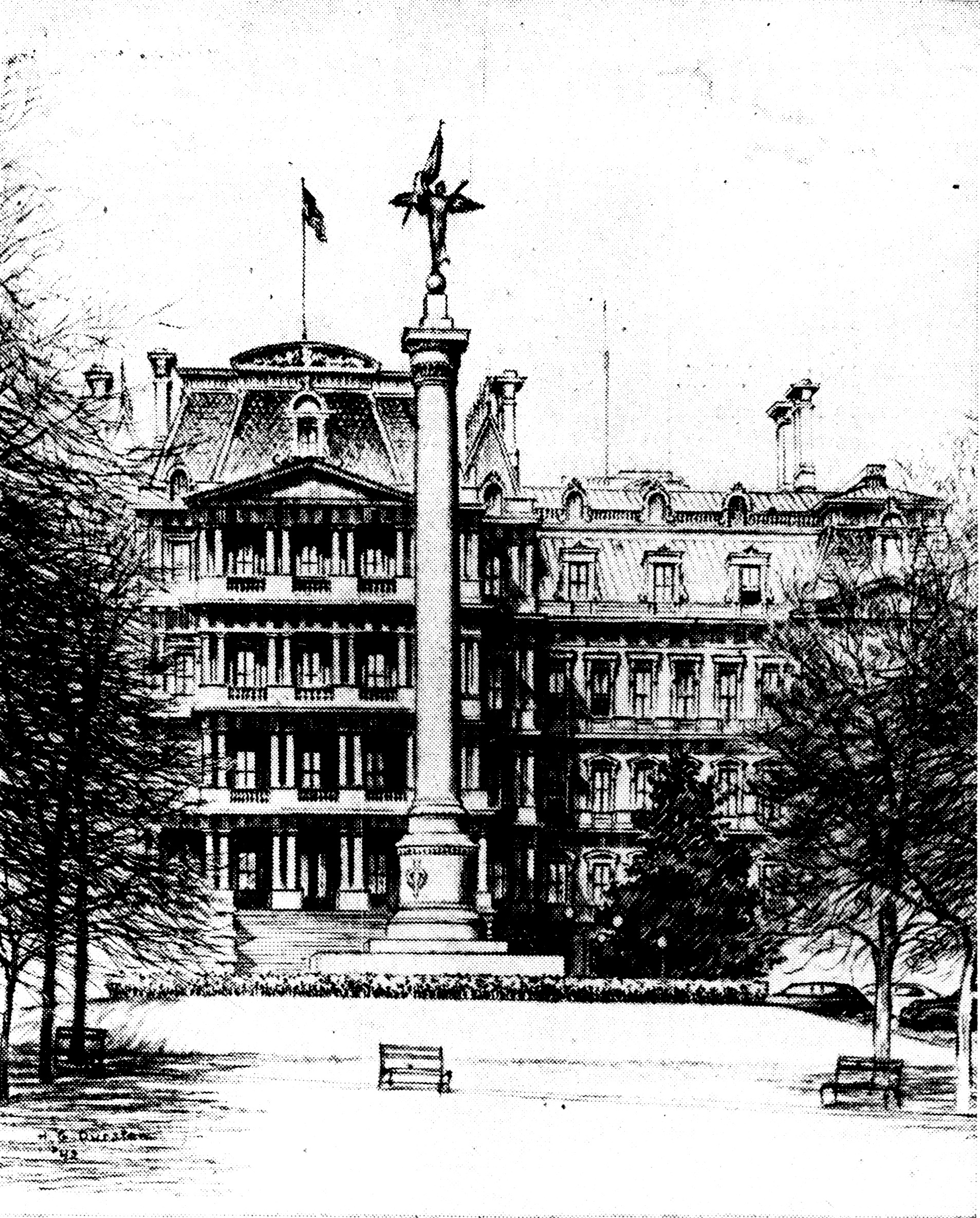
Victorianism and Victory—Just south of the gray granite State, War and Navy Building stands American Victory, on a 65-foot marble pedestal. Her bronze form was designed in honor of the A. E. F., First Division, by Daniel Chester French, whose sculpture of our Civil War President is in the Lincoln Memorial.
Victory in the Spanish and World Wars was planned in the becolumned old building behind. Seen here is the southern wing, the oldest, completed in 1875. First Government worker to move in was Secretary of State Hamilton Fish, carrying a marble clock under his arm. Secretary of Navy Richard Thompson entered in 1879, and Robert Todd Lincoln, son of Abraham Lincoln, was first Secretary of War to occupy the structure, in 1883.
Costing $10,000,000, it was called the “largest office building in the world,” and was expected to house the three departments for all time. Its architect was Alfred Mullett, a Treasury employe whose life reportedly was shortened by the effort. It has been denounced in print as “the ugliest, if not the smuggest, mass of masonry in Washington,” but it has friends who love it, from its iron and copper roof to its sub-basement. Helen Gatch Durston, who made this drawing, says she nearly got lost in sketching the architectural maze.
President Hoover took over Gen. John J. Pershing's rooms here as his executive office after a White House fire in 1929. The Navy Department had moved out during the World War, and in 1939 Gen. George C. Marshall and the Secretary of War left the building for good. In this war it houses Wayne Coy, liaison officer of the Office for Emergency Management; presidential assistants with passion for anonymity, and part of the Budget Bureau. Here State Department experts labor over diplomatic decisions that must lead America to victory.

